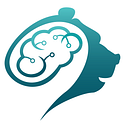Member-only story
The Future of Mental Health Diagnosis
Today, the total number of Americans with mental illnesses sums to around 44 million; that’s nearly one in five Americans suffering from mental health problems (1). These unfortunate statistics bring into question the topic of diagnosis. How are mental health disorders detected, categorized, and treated? This article will seek to explore these topics. Specifically the history, current applications, criticisms, and implications of the various frameworks that are currently being used to identify, study, and treat mental health conditions.
The Diagnostic and Statistical Manual of Mental Disorders (DSM)
The Diagnostic and Statistical Manual of Mental Disorders (DSM) is a handbook that was originally published in 1952 by the American Psychiatric Association (APA). The DSM was the first official manual of mental disorders to focus on clinical use. The DSM has since been considered the “gold standard” for diagnosing mental health disorders. Over the years, the DSM has undergone several revisions to update and reorganize its diagnostic criteria. Currently, the DSM is in its fifth edition (DSM-V) and has served as a revolutionary manual for understanding, classifying, studying, and standardizing…
